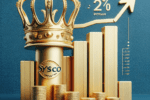New York, United States – Major banks in the United States have recently announced plans to increase their dividends after successfully passing the Federal Reserve stress test. This move signifies a positive outlook on the financial health and stability of these institutions.
JPMorgan Chase, one of the leading banks, has decided to raise its dividend from $1.15 per share to $1.25. Additionally, the bank’s board has approved a $30 billion share repurchase plan. Following suit, Bank of America is increasing its dividend to $0.26 per share from $0.24, while Citigroup’s dividend is set to rise from $0.53 to $0.56 per share. Similarly, Wells Fargo’s dividend will see an increase from $0.35 to $0.40 per share.
This development comes after the Federal Reserve conducted stress tests to ensure that banks have ample capital to withstand potential emergencies. Once these banks pass the stress tests, they are granted approval to implement capital return plans, which include decisions on dividends and buybacks. Shareholders of these banks closely monitored the stress tests to gauge potential returns on their investments.
The announcement of increased dividends and share repurchase plans reflects the financial strength and confidence of these major banks in their ability to navigate economic challenges. Each bank’s decision to boost dividends demonstrates a commitment to returning value to shareholders while maintaining sufficient capital reserves for future contingencies.
Investors and analysts alike are closely following these developments, as they provide insights into the financial stability and growth prospects of the banking sector. The Federal Reserve stress tests serve as a crucial benchmark for evaluating banks’ readiness to weather adverse economic conditions, giving investors greater confidence in the overall resilience of the banking industry.
As more banks unveil their capital plans in the wake of passing the stress tests, stakeholders are assessing the implications for investment strategies and potential returns. The decision to increase dividends and initiate share buybacks reflects a strategic approach to capital management, balancing growth opportunities with prudent risk management practices.
Overall, the uptick in dividends and share repurchase plans signals a positive outlook for the banking sector, reinforcing investor confidence in the resilience and stability of major financial institutions in the United States. This strategic move not only benefits shareholders but also underscores the banks’ commitment to long-term financial sustainability and growth.










